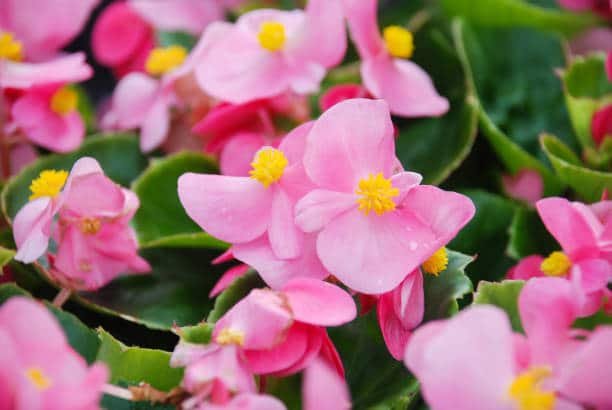Ever wondered about the magic behind your morning cup of coffee? Well, it’s not magic, but the ingenious workings of a coffee maker!
In this article, we’re going to demystify the process and break down how your trusty coffee maker transforms those coffee grounds into your daily dose of liquid motivation. We would also break down for you how best to use a coffee maker.
Keep reading!
Table of contents
How does a Coffee Maker Work?
Water Heating:
The coffee maker has a water reservoir, like a tank. You pour water into it.
The coffee maker then heats this water to a near-boiling temperature.
Coffee Grounds:
You place coffee grounds into a filter or a pod, depending on your coffee maker type.
Brewing Process:
The hot water is then poured or forced over the coffee grounds.
As the water interacts with the coffee grounds, it extracts flavors and essences.
Filtering:
The brewed coffee, now infused with the goodness from the grounds, passes through a filter to separate the liquid coffee from the used coffee grounds.
Drip or Percolate:
The filtered coffee then drips or percolates into a pot or carafe, ready for you to pour into your favorite mug.
Enjoy:
Finally, you savor the result – a hot, aromatic cup of coffee!
So, in essence, your coffee maker is like a water wizard that transforms simple ingredients into the delightful beverage that kick-starts your day.
Check out this related content: How To Get Mildew Out Of Clothes In Less Time
How to Use A Coffee Maker?
Using a coffee maker is a straightforward process, but it can vary slightly depending on the type of coffee maker you have. Here’s a general guide on how to use a standard drip coffee maker:
Gather Your Supplies:
You’ll need coffee grounds, a coffee filter (if required), and water.
Water Measurement:
Measure the amount of water you need based on the number of cups you want to brew.
Add Water:
Pour the measured water into the water reservoir at the back or side of the coffee maker.
Coffee Grounds:
Place a coffee filter in the filter basket.
Add the appropriate amount of coffee grounds to the filter. A standard ratio is one to two tablespoons of coffee grounds per six ounces of water, but you can adjust according to your taste preferences.
Start the Brewing Process:
Close the coffee maker lid.
Turn on the coffee maker.
Wait for Brewing to Complete:
Allow the coffee maker to complete the brewing process. This usually takes a few minutes.
Pour Your Coffee:
Once brewing is complete, carefully remove the coffee pot or carafe from the warming plate.
Pour yourself a delicious cup of coffee.
Turn Off the Coffee Maker:
Turn off the coffee maker to save energy.
Read also: How to Organize Tools in your Toolbox
Why does it take time for my coffee to brew?
The time it takes for your coffee to brew is essential for achieving the best flavor extraction from the coffee grounds. These are some of the reasons why it takes time for your coffee to brew–
Flavor Extraction:
Coffee brewing is essentially a process of extracting flavors from the coffee grounds. This extraction is more effective when hot water interacts with the coffee grounds for a sufficient amount of time.
The water needs time to dissolve and carry away the soluble compounds in the coffee grounds, such as oils, acids, and flavor compounds.
Balancing Extraction:
Brewing for the right amount of time helps achieve a balance in flavor extraction. If the water interacts with the grounds too quickly, you might end up with under-extracted coffee, which can taste sour or weak.
Conversely, if the water stays in contact with the grounds for too long, over-extraction may occur, resulting in a bitter taste.
Optimizing Temperature:
The brewing time allows the water to stay in the optimal temperature range for extracting flavors. Water that’s too hot or too cool can affect the taste of the coffee.
Brewing Method:
Different brewing methods may require varying amounts of time. For example, a French press typically has a longer steeping time compared to a drip coffee maker.
Coffee Maker Design:
The design of your coffee maker also influences brewing time. Some machines are built to expedite the process, while others follow a slower but more thorough extraction.
Customizing Strength:
The brewing time also allows you to customize the strength of your coffee. If you prefer a stronger cup, you might let it brew a bit longer.
Check out this related content: How to Get Rid of Ground Hornets
Conclusion
Your coffee maker is your morning hero, turning simple ingredients into a cup of joy. Understanding the straightforward steps—water heating, ground soaking, and patience—reveals the artistry in every cup.
So, the next time you savor that morning brew, know that it’s not just coffee; it’s the result of your coffee maker’s perfect symphony.
Read also: Top 10 Spring Plants you don’t know about
Frequently Asked Questions
Think of your coffee maker as a water magician. It heats water to the perfect temperature, pours it over coffee grounds, extracts the flavors, and voilà—your coffee is ready to perk you up!
The water reservoir is like the coffee maker’s tank. It stores the water you need for your brew. Pour water in, and the coffee maker takes care of the rest.
Patience is a virtue, especially when it comes to brewing coffee. The machine needs time to let hot water mingle with coffee grounds, extracting the flavors that make your cup so delightful.
Not quite. While most coffee makers follow a similar process, there are variations. Some use pods, others use filters. The basics remain, but the details can change.
It happens as the hot water is forced through the coffee grounds and into the pot, signaling that your brew is on its way.
References
- dolce-gusto.co.uk– how to use a coffee maker
- home.howstuffworks.com- how coffee makers work
- techradar.com– how to use a coffee maker
- coffeedesk.com– how to use a coffee maker





